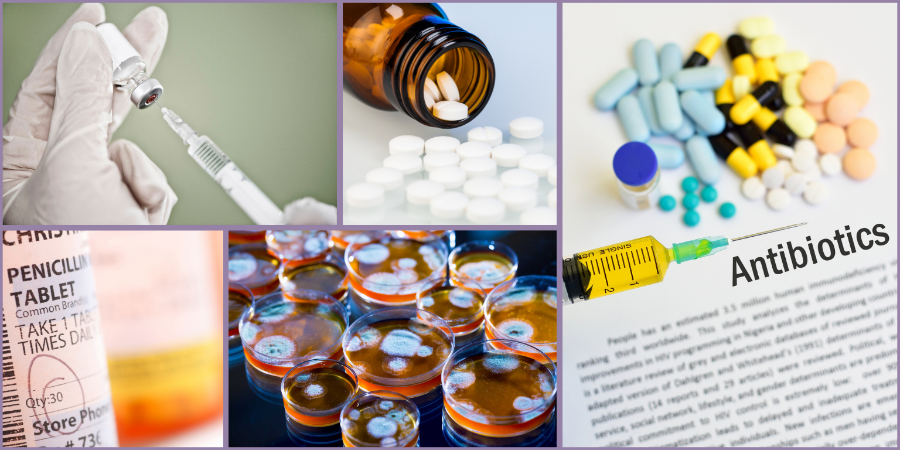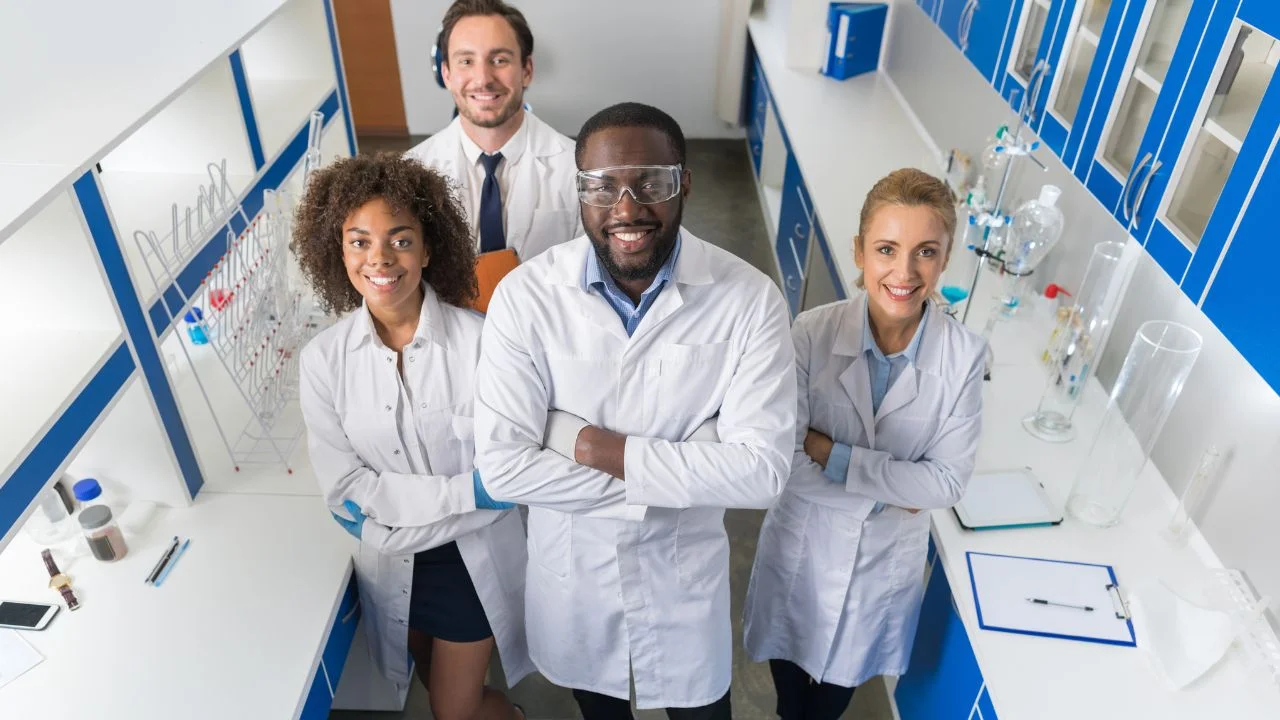Everything You Need To Know About Penicillin
27 Sept, 20214:45Penicillin, derived from the Penicillium mould, was one of the first and still is one of the...

Penicillin, derived from the Penicillium mould, was one of the first and still is one of the most widely used antibiotic agents to this day. Its discovery was a momentous event for humanity, signalling the dawn of the antibiotic age. Before then, there was no cure for infections such as gonorrhoea, blood poisoning, meningitis, pneumonia, or rheumatic fever. It’s estimated that to date, it’s saved over 200 million lives.
The 28th of September marks the 93rd anniversary of Penicillin’s discovery. In celebration of this crucial breakthrough, here’s everything you need to know about penicillin.
How does penicillin work?
There are different strands of penicillin that have antibacterial properties, attacking a whole range of bacteria. They work by indirectly bursting bacterial cell walls. They do this by attacking peptidoglycans, which play an important role in maintaining the structure of the bacterial cells.
Peptidoglycans create a mesh-like structure around the plasma membrane of bacterial cells, thus strengthening the cell walls and stopping external particles and fluids from entering the cell. Penicillin works by blocking the protein struts that bind the peptidoglycans together, stopping bacteria from closing the holes in the cell walls.
Because the water concentration is lower within bacteria than in surrounding fluids, water gushes through the holes in the walls of the cells and the bacteria explode.
The discovery of penicillin
Sir Alexander Fleming, Professor of Bacteriology at St. Mary's Hospital in London, had returned from a holiday and was sorting through petri dishes containing colonies of Staphylococcus, bacteria that can cause sore throats, abscesses, and boils.
Fleming noticed that one of the petri dishes has been contaminated. Whilst there were colonies dotted around it, there was one area of the petri dish where mould had grown and the zone around it was clear. It seemed like the mould had produced a substance that inhibited bacterial growth.
Looking into this further, he discovered that this substance produced by the mould was capable of killing a whole range of dangerous bacteria, such as the diphtheria bacillus, meningococcus, and streptococcus (all gram-positive pathogens).
The next task Fleming set himself, alongside his assistants Frederick Ridley and Stuart Craddock, was to isolate pure penicillin from the mould. However, this proved extremely complicated as the mould was very unstable.
Fleming published his findings in 1929 in the British Journal of Experimental Pathology but with still no luck isolating the compound, he stopped studying penicillin in 1931.
The evolution of penicillin
Although Alexandre Fleming has been credited with the discovery of penicillin, it was Howard Florey, Ernst Chain and their colleagues at the University of Oxford who turned Fleming’s discovery into a life-saving drug.
In 1939, just as wartime conditions were starting to make research especially challenging, Florey gathered a team that included Norman Heatley, a fungal expert, and together with Chain, they managed to successfully purify penicillin from a sample of Fleming’s strain of Penicillium mould.
On the 25th of May 1939, the researchers injected eight mice with a dangerous strain of Streptococcus. They then gave four of these mice penicillin. The other four were kept as untreated controls. The next morning, all four mice given penicillin were alive. The other four were dead.
In February 1941, Albert Alexander was the first person to receive penicillin. Whilst pruning his roses, the 43-year-old policeman has scratched the side of his mouth. He developed a life-threatening infection and had abscesses affecting his whole body. Given penicillin, he made a remarkable recovery within the first 24 hours. Unfortunately, the supply of penicillin ran out before he could make a full recovery and he subsequently passed away.
Soon after, other patients were administered penicillin with remarkable success, and there were soon plans to make penicillin available for British troops on the battlefield. However, wartime conditions made it very difficult to mass-produce the drug, so Florey turned towards the United States for help.
In 1941, with backing from the Rockefeller Foundation, Florey and Heatley travelled to the US to see if they could raise interest from American pharmaceutical companies to produce penicillin on a large scale. With the help of Robert Thom from the department of Agriculture, they were referred to the Northern Regional Research Laboratory (NRRL) in Peoria, Illinois, which had a well-established Fermentation Division.
With the agreement of Orville May, Director of the NRRL, and under the direction of Robert Coghill, Chief of the Fermentation Division, research began to increase the yield of penicillin. Heatley remained in Peoria to provide his expertise and significant progress was soon made.
In the meantime, Florey travelled around the US, visiting various pharmaceutical companies to drive up their interest in the drug. Although initially pick-up was slow, with the backing of Alfred Newton Richards, chair of the Committee on Medical Research (CMR) of the Office of Scientific Research and Development (OSRD), several big pharma businesses, including Merck, Squibb (now Bristol Myers Squibb), and Pfizer, picked up research and production of penicillin.
At the end of 1942, there was enough penicillin to treat less than 100 patients. By September 1943, there was enough to supply the whole of the Allied Armed Forces. By the end of the war, American companies were producing 650 billion units per month.
Current applications of penicillin
Different species of the mould Penicillium can synthesise different types of penicillin, which can be separated into two classes: naturally occurring penicillin, which results from the process of mould fermentation, and semisynthetic penicillin, in which the structure of the chemical substance 6-aminopenicillanic acid (found in all penicillin) is altered in different ways.
This means it’s possible to modify the characteristics of the antibiotic and to manufacture different kinds of penicillin to fit specific therapeutic purposes.
Penicillin G and penicillin V, both naturally occurring, are still used to this day. Penicillin G is very unstable within an acid environment, meaning it gets broken down when it goes through the stomach. For this reason, it’s given by intramuscular injection, which limits the ways it can be used. On the other hand, penicillin V is a lot more resistant to digestive acids and can be taken orally. This is also the case for some semisynthetic penicillin.
Because all penicillin work in the same way, they only work against microorganisms that are actively replicating and producing cell walls, whilst presenting no threat to human cells.
As time has gone by, some types of previously susceptible bacteria, such as Staphylococcus, have grown resistant to naturally occurring penicillin, something that was already being documented as soon as 1940. Second-generation penicillin has been developed since. However, due to the nature of bacteria, the speed at which they reproduce, and the occurrence of mutations, multiple drug-resistant bacteria have emerged. More than 150 antibiotics have been developed since penicillin was discovered, and for many antibiotics available, resistance has appeared.
Even so, it’s undeniable that Alexander Fleming’s discovery, and the work done by researchers such as Howard Florey, Ernst Chain, and Norman Heatley, changed the world of medicine forever. It led to the discovery of all kinds of strands of penicillin and other antibiotics, saving the lives of hundreds of thousands of people.
NES Fircroft and the Life Science industry
NES Fircroft has been supporting the Life Science market for over 20 years, sourcing personnel for engineering, scientific and commercial roles across the market. We recruit highly experienced professionals to the biotechnology, pharmaceutical, diagnostics, and medical devices industries. We can provide both permanent and contract candidates to the Life Science industry across Quality, Clinical, Regulatory/Compliance, and Engineering disciplines.
If you’re looking for skilled personnel, get in touch with our dedicated Life Science Recruitment teams to find out how we can support you.
Are you looking for a new job? Browse our Life Science vacancies today.










